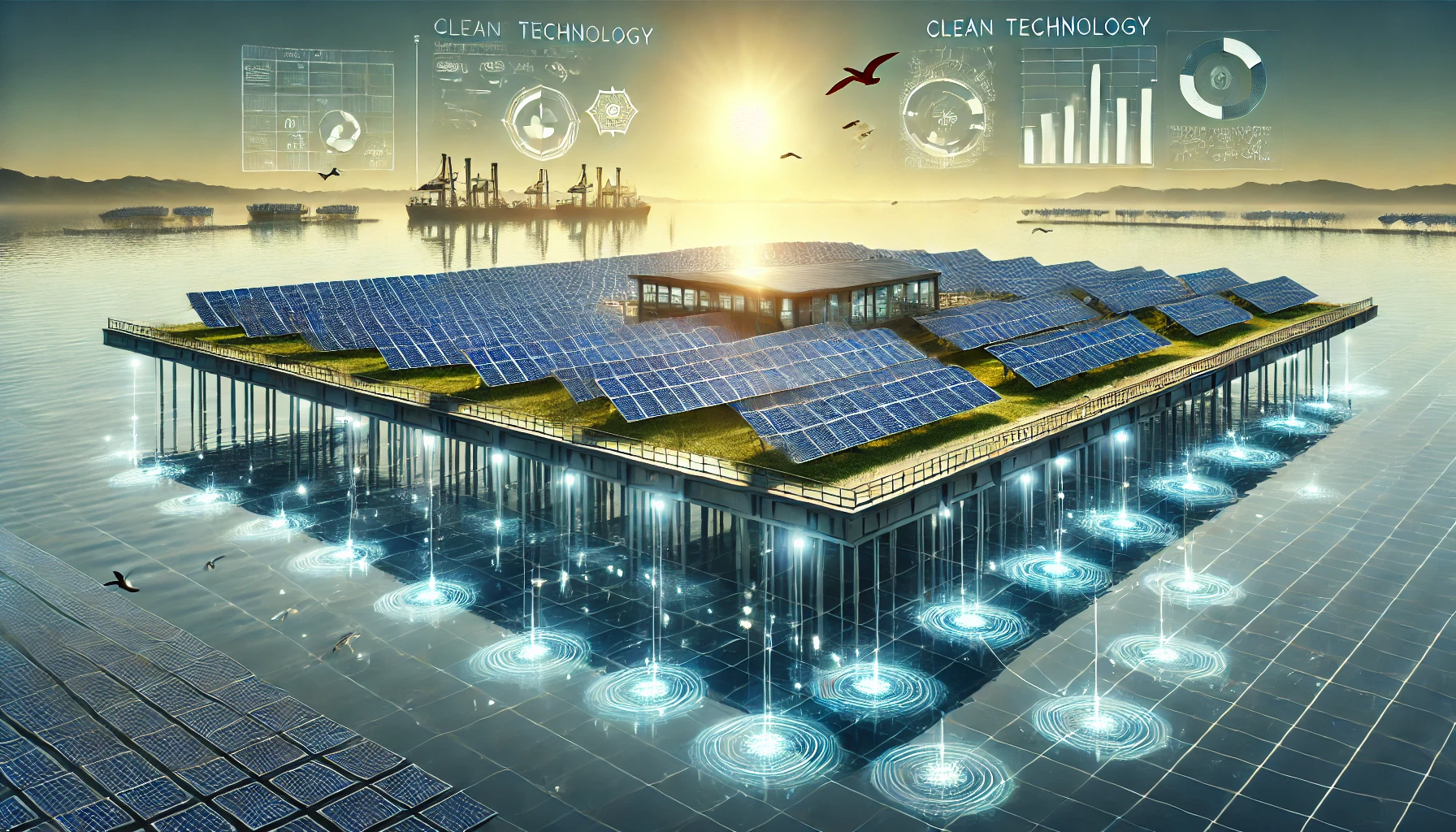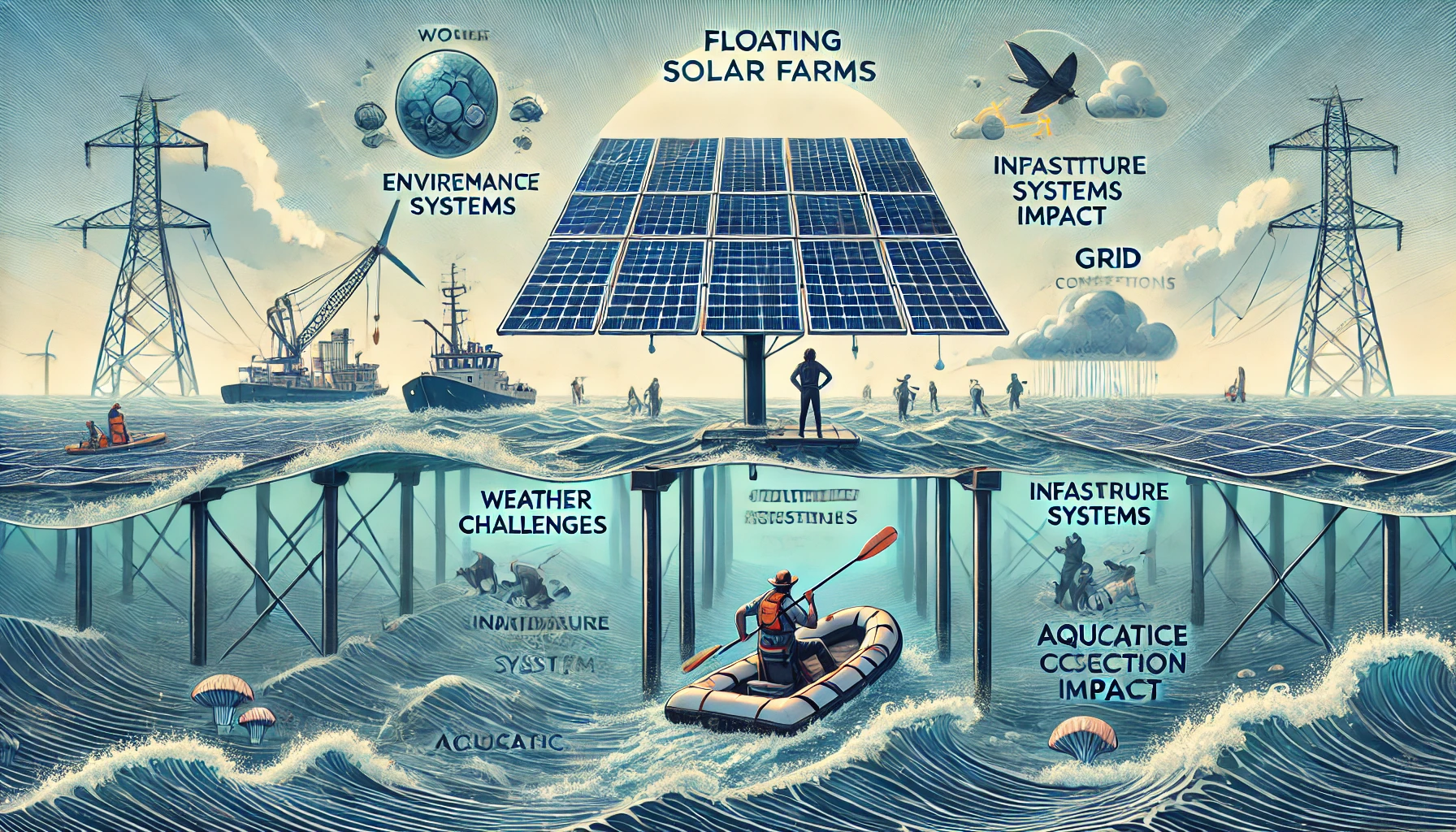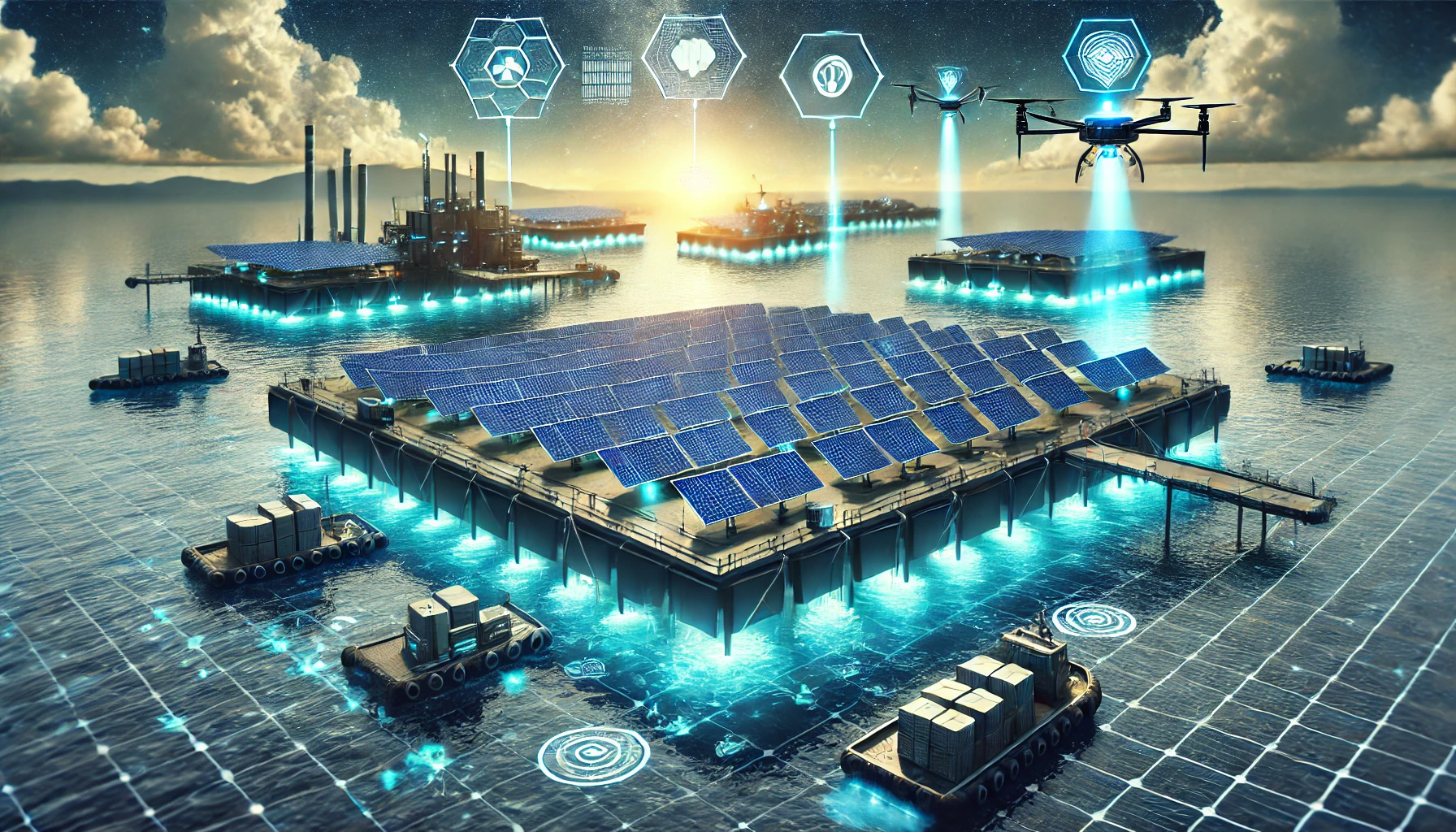
The global demand for clean energy is on the rise as the world seeks to reduce reliance on fossil fuels and combat the effects of climate change. Among the most promising innovations in the renewable energy sector is floating solar farms, which harness the power of the sun while utilizing water surfaces. These floating solar panels have the potential to transform how we generate and consume electricity, especially in areas where land-based solar systems face limitations.
What Are Floating Solar Farms?
Floating solar farms, also known as floating photovoltaics (FPV), are solar installations that float on bodies of water such as lakes, reservoirs, and even coastal areas. These systems use solar panels mounted on floating structures, allowing them to capture sunlight and convert it into electricity just like traditional ground-based solar panels. The primary difference is that these solar panels are placed on water surfaces, which opens up new possibilities for renewable energy production.
Floating solar installations have become an attractive option for many countries, particularly in regions where land is scarce, or the terrain is unsuitable for traditional solar farm setups. By using water bodies—which often have large, underutilized surface areas—these solar arrays can generate solar power without competing for valuable land space.
The Growing Popularity of Floating Solar Farms
As the need for renewable energy grows, floating solar technology has gained considerable traction. According to a report from the International Renewable Energy Agency (IRENA), floating solar systems could represent up to 10% of global solar capacity by 2030. This makes it an essential part of the energy transition in the coming decades.
The Largest Floating Solar Farms in the World
Several floating solar projects have already demonstrated the potential of this technology, setting records for installed capacity and pushing the boundaries of what floating solar can achieve.
-
CECEP Floating Solar Farm (China): This is one of the world’s largest floating solar plants, located on the Huainan Coal Mine in China. With a capacity of 2 gigawatts (GW), it provides an impressive example of how floating solar can be integrated into previously unused water surfaces. By placing solar panels on the water, the farm can generate solar power while reducing water evaporation and limiting algae growth.
-
Sembcorp Floating Solar Farm (Singapore): Sembcorp has successfully completed one of the largest floating solar installations in Asia, located at Tengeh Reservoir. The installation has a capacity of 60 megawatts (MW) and is expected to generate electricity annually to power around 16,000 homes. This project highlights the role floating solar can play in densely populated areas where land for traditional solar farms is limited.
-
The Largest Floating Solar Farm in Europe (Portugal): In Portugal, the largest floating solar farm in Europe was constructed on the Alqueva Dam. With a capacity of 1.6 MW, this floating photovoltaic system is an essential part of Portugal’s efforts to increase its share of renewable energy in the national grid.
Key Benefits of Floating Solar Farms
Floating solar technology offers several unique advantages compared to traditional solar installations:
1. Efficient Use of Water Surfaces
One of the key advantages of floating solar panels is that they use water surfaces, which are often underutilized. Many floating solar systems are placed on reservoirs, lakes, and canals—areas that would otherwise remain unused for energy generation. In densely populated areas, this can be a game-changer, as it allows for the generation of solar energy without taking up valuable land space.
2. Cooling Effect for Improved Performance
Solar panels typically become less efficient as they heat up during the day. However, floating solar panels benefit from the natural cooling effect provided by the water beneath them. Water has a higher heat capacity than air, meaning that the temperature of the solar array stays lower compared to land-based systems. This cooler environment helps the panels maintain higher efficiency and output compared to traditional solar power installations.
3. Reduction in Water Evaporation
Placing floating solar panels on water surfaces can help reduce water evaporation, which is especially beneficial in areas where water scarcity is a concern. By covering the surface of water bodies, floating solar arrays can reduce the amount of water lost to evaporation, making them a double win for both clean energy and water conservation.
4. No Need for Land-Based Infrastructure
Unlike traditional solar farms, which require large plots of land, floating solar systems make use of existing water bodies. This reduces the need for clearing land or converting natural landscapes into energy production areas. In regions with limited available land, such as urban environments or areas with agricultural land already in use, floating solar panels present an attractive alternative.
5. Environmental Protection and Marine Life Preservation
By strategically placing floating solar farms in appropriate locations, we can avoid disrupting marine life and aquatic ecosystems. Properly designed floating solar installations are designed to minimize negative impacts on aquatic habitats and can even provide shade to reduce algae growth. This helps to preserve water quality and limits the harmful effects of algal blooms, which can occur in reservoirs or lakes when the water is exposed to excessive sunlight.
The Technology Behind Floating Solar Panels
Floating solar technology involves the integration of several essential components to ensure efficient energy generation and long-term durability. Here are some key aspects of floating solar systems:
1. Floating Platforms and Anchoring Systems
The heart of a floating solar installation is the platform that supports the solar panels. These platforms are designed to float on water and are often made from lightweight, durable materials such as high-density polyethylene (HDPE). To keep the panels in place, the platforms are anchored to the water body using anchoring systems. These systems ensure that the floating solar panels remain stable and don’t drift, even in strong winds or currents.
2. Solar Modules
The solar modules used in floating solar installations are similar to those used in land-based solar farms. These panels are typically monocrystalline or polycrystalline, depending on the required efficiency and cost considerations. The key difference is that these modules are mounted on floating structures, which are designed to handle the unique environmental factors of being on a body of water, such as humidity and temperature fluctuations.
3. Power Conversion Systems
Floating solar systems are typically connected to the power grid through an inverter system that converts the direct current (DC) electricity produced by the solar panels into alternating current (AC). This electricity is then sent to the grid, where it can be distributed to homes and businesses. Battery storage systems are also increasingly being incorporated into floating solar projects to store excess power for use during periods of low sunlight or high demand.
Challenges of Floating Solar Farms

While the benefits of floating solar farms are clear, there are also some challenges that need to be addressed before they can be widely deployed:
1. Environmental Concerns
Although floating solar technology has minimal environmental impact, it’s essential to ensure that the installations do not harm marine life or ecosystems. Factors such as algae growth and water quality must be closely monitored to prevent potential damage to aquatic habitats. Environmental protection groups and authorities play an important role in ensuring that floating solar plants do not disrupt sensitive ecosystems.
2. High Initial Costs
Like any new technology, floating solar installations come with a higher upfront cost compared to traditional land-based solar farms. The cost of floating platforms, anchoring systems, and water-based infrastructure can be significant. However, as the technology matures and economies of scale come into play, these costs are expected to decrease, making floating solar farms a more affordable option for renewable energy generation.
3. Limited Suitable Locations
While floating solar technology offers many advantages, it is not suitable for all locations. Water bodies with high currents, extreme weather conditions, or limited space may not be ideal for floating solar panels. Careful site selection is crucial for ensuring that floating solar systems can function efficiently and without interference from natural elements.
Floating Solar’s Role in Water Management
In addition to generating renewable energy, floating solar farms also offer several advantages in terms of water management. For instance, by reducing water evaporation from large bodies of water, these systems help preserve vital water resources, particularly in arid regions. With climate change contributing to increasing water scarcity in many parts of the world, floating solar installations could play a key role in water conservation.
Furthermore, by using floating solar systems on reservoirs and lakes, water bodies are less susceptible to contamination from direct sunlight, which helps in maintaining water quality. This dual benefit of generating solar power while protecting water resources makes floating solar farms an attractive solution for countries dealing with water shortages and energy demands.
Future of Floating Solar Farms

As the demand for renewable energy sources grows and land availability continues to decline, floating solar technology is poised to play a significant role in the global energy transition. With continued advancements in floating photovoltaic systems and storage technologies, we can expect to see even larger and more efficient floating solar installations in the coming years.
Countries such as China, India, Singapore, and Thailand are already leading the way with ambitious floating solar projects, demonstrating the enormous potential of this technology. As floating solar capacity continues to expand, it is likely that floating solar will become a key player in the global energy mix, helping to meet the needs of the world’s growing population while combating climate change.
For more information on floating solar projects and technology, consider exploring the following links:
Floating solar farms represent the future of green energy, offering a sustainable and innovative solution to the challenges of renewable energy production. As technology continues to advance, floating solar will become an even more integral part of the clean energy landscape, helping to power the world with solar power from water surfaces.

l8rw7j